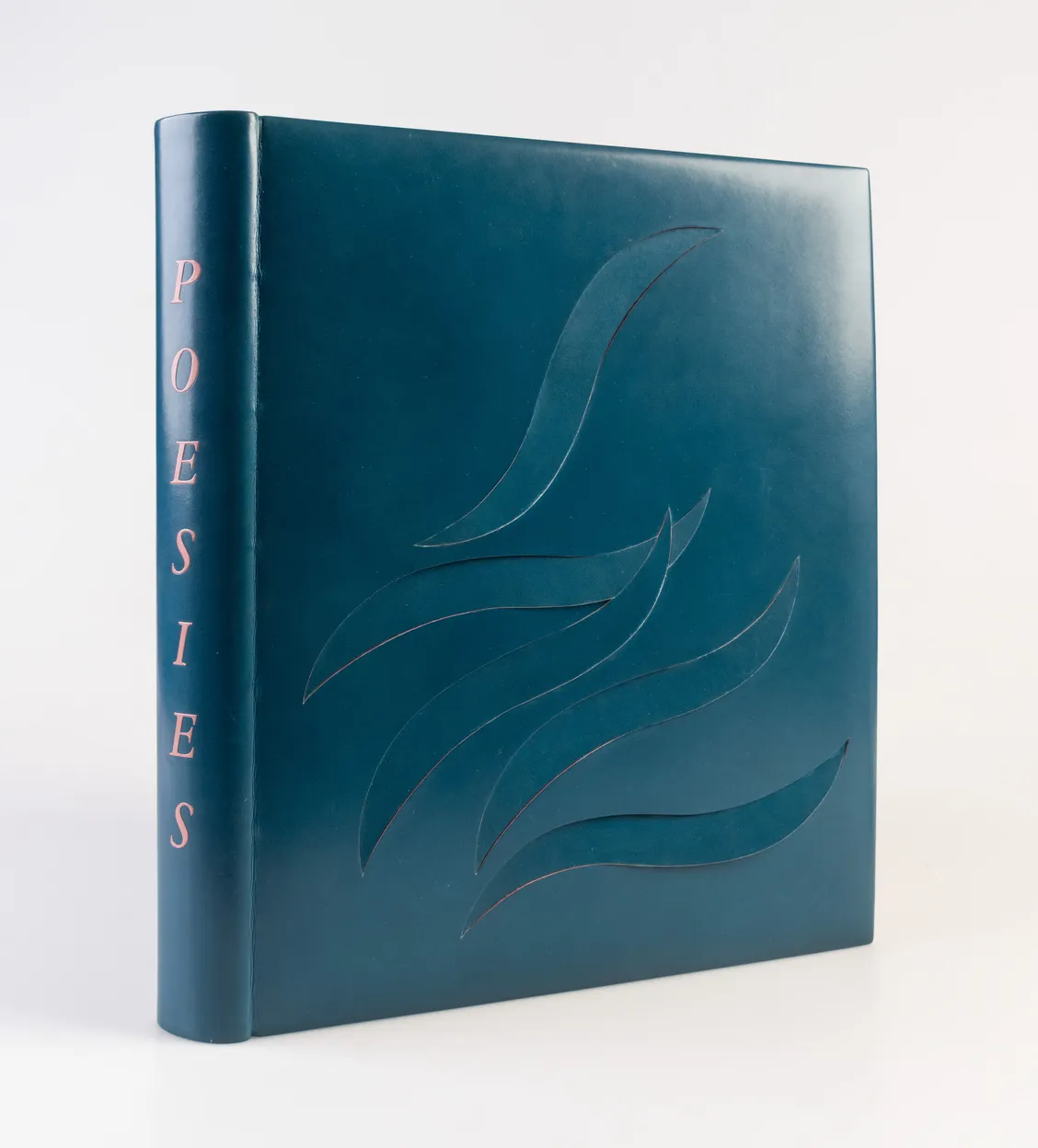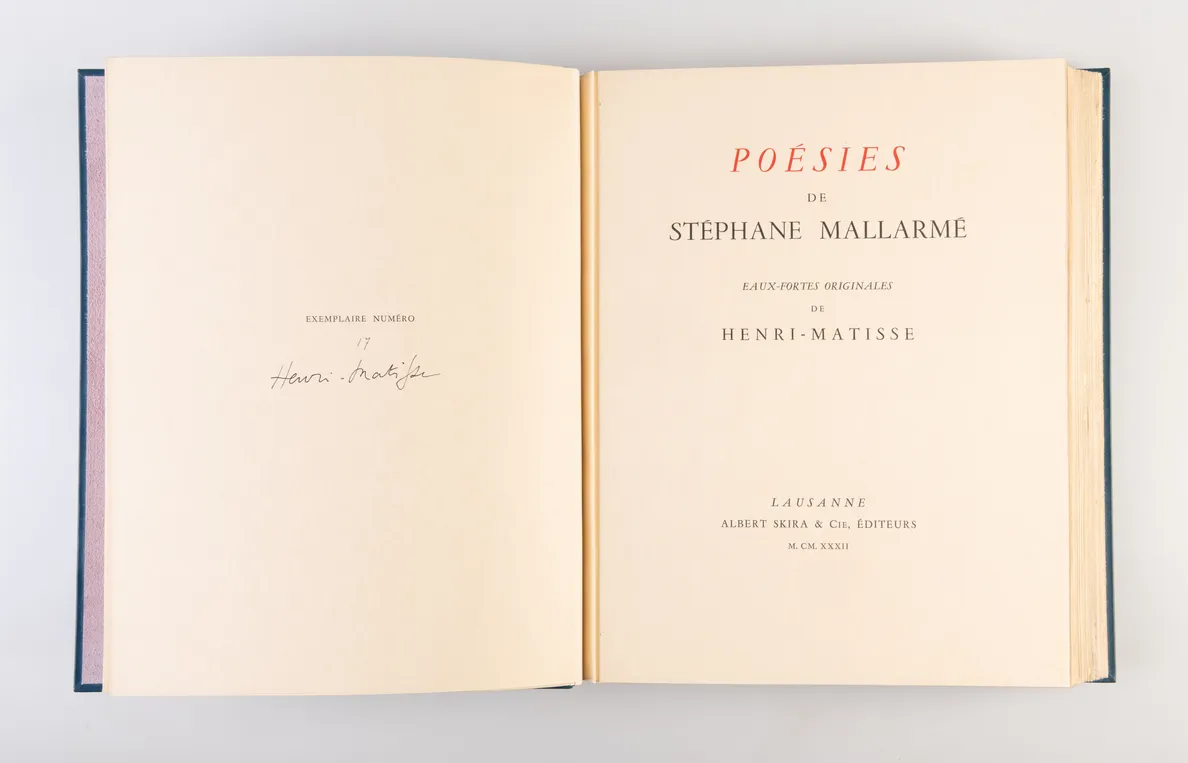Very good, slight scuff to top edge of lower cover, very slight offsetting to occasional plates, otherwise bright and clean.
Matisse's first livre d'artiste, and one of the most important illustrated books of the twentieth century. Although Poésies was not his first attempt at illustration, Matisse considered it to be 'my first book' (Matisse, How I Made my Books) and it marked a significant departure for the artist. It was the publisher Albert Skira who commissioned the book in 1930, but it was Matisse's choice to illustrate Mallarmé, discarding Skira's initial suggestion of Le Fountaine's Amours de Psyché et de Cupidon. Mallarmé's poems had already proved to be fertile ground for the likes of Manet and Gaugin, in particular L'apres-midi d'un faune, and Matisse felt a particular parallel between the poet's work and his own art.
'Every line made by Matisse's blunt sapphire point is pondered and placed with the same care as every word in Mallarmé's poetry. His lines and use of surrounding space match the inspired meticulousness of the poet; there is an exquisite refinement that echoes the verse' (W.J. Strachan, The Artist and the Book in France). Matisse understood that it was not enough to simply place illustrations carelessly alongside the text and he considered deeply the need to 'balance the two pages- one white, with the etching, the other comparatively black, with the type' (Matisse, How I Made my Books).
'I obtained my result by modifying my arabesque in such a way that the spectator should be interested as much by the white page as by the expectation of reading the text.
I compare my two pages to two objects taken up by a juggler. Suppose that his white ball and black ball are like my two pages, the light one and the dark one, so different, yet face to face. In spite of the difference between the two objects, the art of the juggler makes a harmonious whole in the eyes of the spectator’ (Ibid.)





